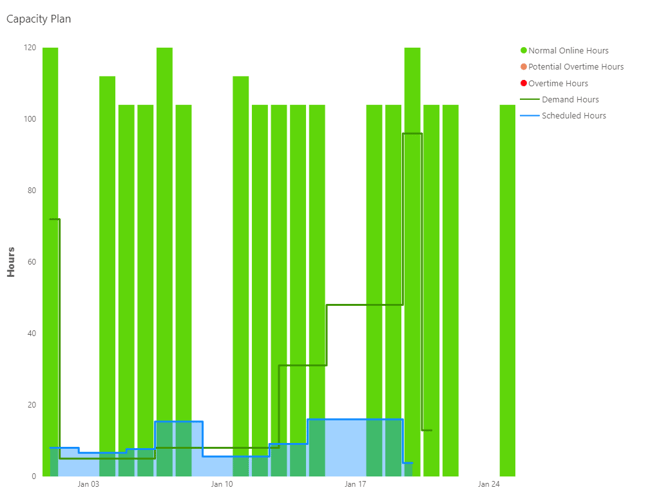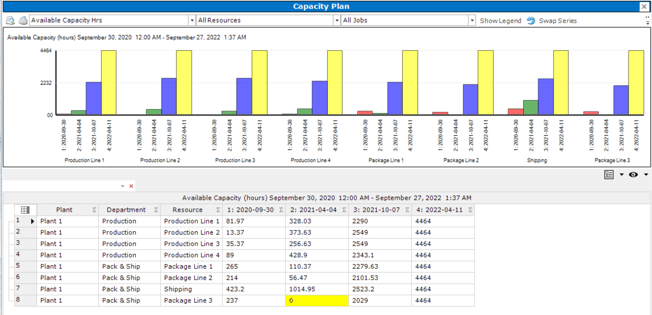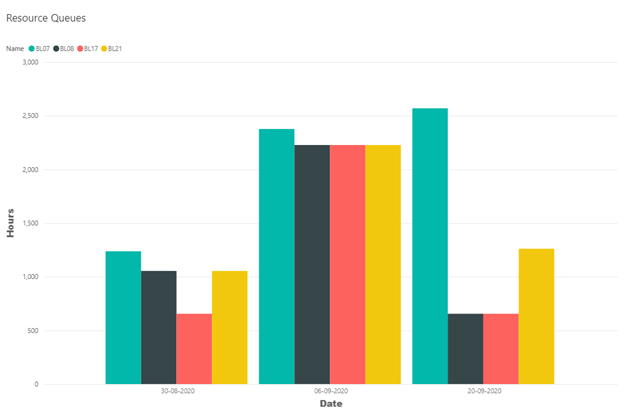 Most people working in the manufacturing industry have experienced times where the demand for products or services exceeded the actual available capacity to meet those demands.
Most people working in the manufacturing industry have experienced times where the demand for products or services exceeded the actual available capacity to meet those demands.
These frustrating situations highlight the need for proper analysis of the capacity you have and its utilization, to identify he root of the issues.
Capacity Analysis is the process of identifying the available capacity for your organization which includes the available inventory holding capacity, machine capacity, labor capacity, etc.
It also aims to identify how capacity utilization can be optimized to increase the total available capacity of the operations.
Optimize Your Production with Accurate Capacity Planning
The overall goal of many manufacturing companies is to create an optimized and efficient schedule to have balanced flow between supply and demand, while minimizing waste and costs.
Companies can get closer to their goals by maximizing the available capacity they already have.
To do this, it is helpful to model the capacity of the entire infrastructure, process, and/or machines. Then, as long-term production planning and demand forecasting are performed, a capacity plan can be developed.
The capacity plan ensures that the production facility knows which orders they can commit to based on the available capacity of their facility.
Capacity planning promotes a systemic approach of determining resource requirements for a projected output within a given time frame. Proper capacity planning will help identify whether you have the right capabilities (or 'skills') required to meet demand.

Capacity Limitations
It is important to understand your capacity limitations so that you can identify areas of improvement and develop a capacity plan that is just right for your organization.
Many factors contribute and detract from the available capacity. These include the quality and quantity of labor, machine availability, waste levels, government regulations, required machine maintenance, and other external factors.
Unexpected events, as most recently observed during the COVID-19 global pandemic, have highlighted how external factors can affect capacity levels.
Physical distancing requirements reduced the total available capacity for many manufacturers, leading to a decreased output. Some of these companies chose to add overtime capacity, while others chose to outsource some of their operations or even added automation to increase the output of their production lines.
The prevailing theme for businesses that thrived during the pandemic had one thing in common - agility. These companies were able to quickly identify the effects of losing capacity in order to make the right choices to meet their business goals quickly and efficiently.
Main Capacity Thresholds:
The key frameworks to model capacity are rooted in real world thresholds (constraints) of practicality and profitability. Most commonly, these include:
- Price - The cost of equipment, machines, softwares, and other maintenance fees can create thresholds to the total available capacity on resources.
- Performance - The performance of your resources can affect the total amount of capacity you have. If older machines are running at a slower rate than they should, you are not able to produce as many items on it.
- Capabilities - The resource capacity you posses must be capable to perform the work that is required. If your capacity bottleneck involves a process requiring a highly specific skill set, your capacity will be limited.
-

Capacity Analysis
The first step to take when you are constantly operating under constrained capacity is to identify the bottleneck.
A capacity bottleneck is a process or operation that has limited capacity and reduces the capacity of the entire production plant.
Bottlenecks cause delays in production, too much work-in-process items, and can be costly to the company. Identifying capacity bottlenecks can help identify the real cause of the problem and develop a plan to resolve it.
There are many ways to increase resource capacity within your facility:
- Perform regular maintenance on machines to increase their efficiency.
- Purchase another machines (best for inexpensive resources, if possible).
- Hire another employee.
- Invest in employee training.
- Re-allocate existing capacity to increase the capacity of the bottleneck operation.
- Optimize your production schedule to reduce sequence-dependent setups.

Capacity Modeling and Advanced Planning and Scheduling
In today's manufacturing facilities, the optimization of production scheduling and capacity planning are changing rapidly and drastically.
Outdated capacity planning models that relied on guesswork and oversimplification lead to a decrease in efficiency and under-modeled capacity.
However, Advanced Planning and Scheduling (APS) systems have changed the way capacity planning and analysis are handled today.
PlanetTogether’s software is by far the best and most encompassing planning software package offered today.
ED CZYSZ, PRODUCTION SCHEDULING MANAGER, ILLES SEASONINGS & FLAVORS
These systems use capacity performance models with real-time data and analysis to determine what capacity is needed. Capacity constraints are automatically applied to ensure that every machine is capable to perform the work that is assigned to it.
Advanced Planning and Scheduling systems are reshaping and augmenting ERP and MRP softwares by allowing faster and more accurate performance results that have improved operations planning as a whole.
Advanced Planning and Scheduling (APS) Software
Advanced Planning and Scheduling Softwares have become a must for modern-day manufacturing operations as customer demand for increased product assortment, fast delivery, and downward cost pressures become prevalent.
These systems help planners save time while providing greater agility in updating ever-changing priorities, production schedules, and inventory plans.
APS Systems can be quickly integrated with an ERP/MRP software to fill the gaps where these systems lack planning and scheduling flexibility, accuracy, and efficiency.
With PlanetTogether APS you can:
- Create optimized schedules that balance production efficiency and delivery performance
- Maximize throughput on bottleneck resources to increase revenue
- Synchronize supply with demand to reduce inventories
- Provide company-wide visibility to resource capacity
- Enable scenario data-driven decision making
The implementation of an Advanced Planning and Scheduling (APS) Software will take your manufacturing operations to the next level of production efficiency by taking advantage of the operational data you already possess in your ERP system.
APS is a step in the right direction of efficiency and lean manufacturing production enhancement. Try out a free trial or demo!
Video
APS Resources







 Most people working in the manufacturing industry have experienced times where the demand for products or services exceeded the actual available capacity to meet those demands.
Most people working in the manufacturing industry have experienced times where the demand for products or services exceeded the actual available capacity to meet those demands. 















LEAVE A COMMENT